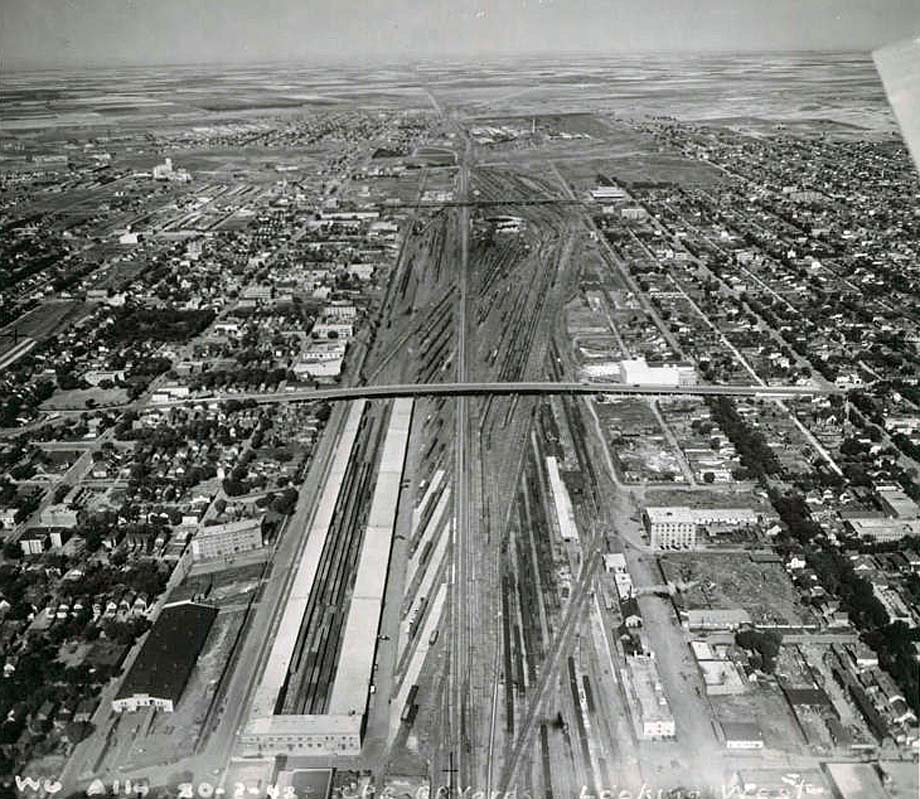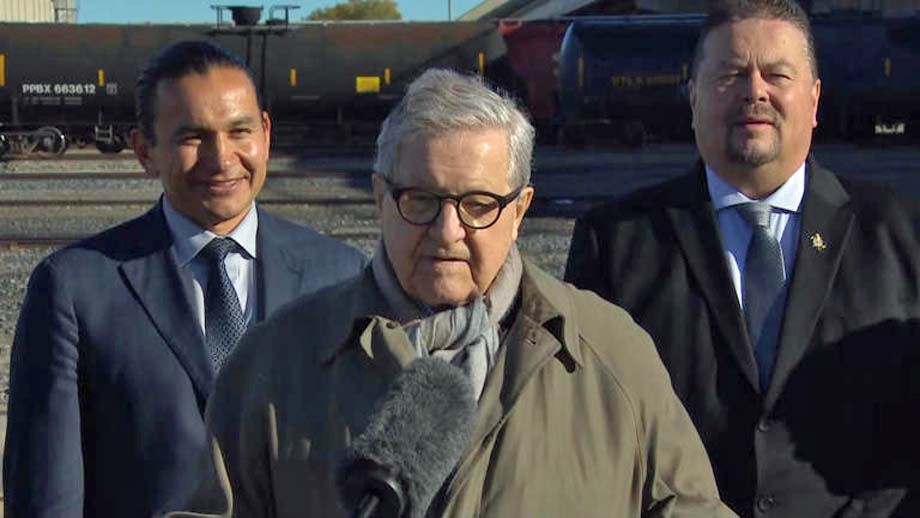
Winnipeg Manitoba - The prospect of relocating railway yards has once again reared up in Winnipeg, with the Manitoba government hiring Lloyd Axworthy and seeding him with $200,000 to conduct a feasibility study on the topic.
The idea of moving rail lines outside the city has been brought up every few years since the 1960s, with most attention focused on the 465 hectare property occupied by Canadian Pacific Kansas City (CPKC) railway in the centre of Winnipeg.
Since 1881, that rail yard has severed the city and created a chasm between the north and south.
The Arlington Bridge was a key link between those parts of the city, crossing over the iron network of lines occupying the CPKC yard, but that bridge was shut down one year ago due to structural concerns.
While that will be a key part of Axworthy's work, the study is about rail yards within the capital region in general, Premier Wab Kinew said on Tuesday morning during a news conference at the corner of Henry and Higgins avenues, alongside the CPKC yard.
"Of course, the tracks that divide the North End from downtown have often been the subject of discussion, but we also know that there are rail yards in St. Boniface, in Transcona, that there's a spur line connecting to the North End Water Pollution Control Centre, which is itself a major infrastructure investment," Kinew said.
"We're going to ask Axworthy to take a global view of all of these various infrastructure, economic, community, and social dimensions that come in with deliberating on the future of rail in the city."
Kinew said the $200,000 is funding to help Axworthy "start the work" and was set aside in the spring budget.
He didn't say whether that funding will be increased at any point.
The study is expected to take two years and include interim reports before recommendations are released in the final report, Kinew said.
Axworthy, a former Liberal federal cabinet minister and the vice-chancellor of the University of Winnipeg from 2004-2014, called it "a very exciting task to think about the future of Winnipeg and just how much railways, since the beginning of our history, have played an important part in shaping who we are, what we do and, ultimately, what we can become."

Railways helped establish Winnipeg as a transportation hub, and they must still still play that part, but there are safety concerns in urban centres around derailments, said Axworthy, who was Canada's minister of foreign affairs from 1996 to 2000.
"I think it requires us to take a serious look at what that particular risk scenario is for the city," he said, and that will require significant involvement by the community in the upcoming study.
"At the same time, we also know that there's an increasing demand for open space, for land for development, for new housing, for providing a different way of life, particularly in the downtown inner city."
As minister of transport under prime minister Pierre Trudeau in the 1980s, Axworthy helped negotiate the move of the Canadian National Railway yards in downtown Winnipeg, an area that is now The Forks, one of the city's most popular destination areas.
"It just shows what you can do with some imagination, and some creativity, and some real courage by governments themselves," he said.
"So I'm really pleased I have that option to be able to work with a number of community groups for the latest relocation study. I think we have, in Winnipeg, an incredible richness of people who are deeply steeped in railway engineering, planning, architecture, and development, that we can draw upon the best sort of ideas and thoughts."
Winnipeg Mayor Scott Gillingham couldn't attend Tuesday's news conference because he is in meetings about the hiring of the city's next police chief, but he issued a statement in which he applauded the study.
"Studying rail relocation, especially looking at incremental improvements, was one of my campaign commitments, so I'm glad to see this moving forward," he wrote.
"This issue has been debated in Winnipeg for many years, but we need solid information on costs, potential funding sources, and the impact on rail operations, jobs, and city infrastructure. This data will help guide future decisions."
Gillingham said the city is eager to be part of the study, which he hopes will consider smaller steps that can be taken right away.
"Over the past two years, I've had productive conversations with rail companies about repurposing abandoned spur lines and underused corridors. These areas could be used for new housing or active transportation, improving safety and connectivity in ways that are more affordable and quicker to implement."
Darren Bernhardt.
(likely no image with original article)
(usually because it's been seen before)
(the image is altered or fake)
provisions in Section 29 of the
Canadian Copyright Modernization Act.

